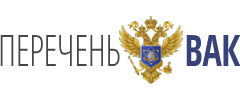Modern ways of remote audit format
Abstract
Importance: the development of digitalization processes and the introduction of new information technologies have an impact not only on the activities of economic entities, but also on the audit, in which there is a need to use other models for organizing an audit and obtaining a sufficient number of audit procedures that confirm the reliability and completeness of financial statements, the possibility of finding reserves for improving business efficiency through the identification and assessment of risks. Purpose: to present the results of a study of the subject area of application of new information technologies when conducting audit procedures in a pandemic or other force majeure circumstances, when traditional techniques and methods for obtaining audit evidence are either unacceptable or impossible. Research design: to achieve this goal, modern methods of implementing audit procedures are considered, with the help of which the collection, transfer, systematization, processing, preservation and coding of fundamental information is carried out to develop an objective conclusion based on the results of checking the reliability of financial statements. The article uses the following empirical and theoretical methods – deduction and induction, axiomatics, observation and comparison, experimental actions, modeling, classification and identification of risks. Results: the article considers several modern technologies of external and internal audit, which make it possible to obtain fairly complete representative audit evidence of identified business and audit risks in the process of traditional and remote auditing. The proposed models of internal audit are aimed at improving the financial performance of corporations. Recommendations are given on the use of an integration model, which includes traditional financial accounting tools, financial statements and methods of internal audit using the process method, and risk assessment, which help minimize the impact of negative factors. At the same time, risk assessment in this model is recommended to be carried out using the FMEA (Failure Mode Effect Analysis) method.
Downloads
References
Догучаева С.М. Анализ применения информационных технологий в аналитическом учете и аудите компаний // Бухгалтерский учет и налогообложение в бюджетных организациях, 2020, no. 4, с. 6-13.
Догучаева С.М. Анализ и реализация блокчейн-технологий в российской экономике // Современная наука: актуальные проблемы теории и практики. Серия: Экономика и право, 2020, no. 2, с. 15-18.
Измайлович С.В. Методика оценки экономических последствий влияния хозяйственных рисков на деятельность промышленных организаций // Вестник Полоцкого государственного университета. Серия D: Экономические и юридические науки, 2010, no. 10, 1, с. 99-102.
Карпова Т.П., Верецук И.И. Взаимосвязь управленческих технологий и содержания управленческого учета // Научные труды Международной научнопрактической конференции ученых МАДИ, (ГТУ), РГАУ-МСХА, ЛНАУ, 2012. Московский автомобильно-дорожный государственный технический университет (МАДИ) (Москва), с. 53-56.
Каширская Л.В., Зурнаджьянц Ю.А. Объекты аудита информационной безопасности и направления их проверки // Аудитор, 2022, т. 8, no. 1, с. 21-31.
Каширская Л.В., Ситнов А.А. Внутренний аудит информационных систем: монография. Москва, КноРус. 218 с.
Кеворкова Ж.А. Стратегический аудит информационных технологий как инструмент повышения эффективности внутреннего контроля // Бухгалтерский учет и налогообложение в бюджетных организациях, 2020, no. 12, с. 14-23.
Кеворкова Ж.А. Методические аспекты IT-аудита как инструмент повышения эффективности внутреннего контроля // Аудитор, 2021, Т. 7, no. 1, с. 25-29.
Кеворкова Ж.А., Карпова Т.П., Карпова В.В. Актуальность и необходимость совершенствования документооборота в организациях коммерческого и государственного секторов экономики // Аудитор, 2021, т. 7, no. 6, с. 15-21.
Сапожникова Н.Г. Формирование информации о рисках в корпоративном учете и отчетности // Учет. Анализ. Аудит, 2021, т. 8, no. 5, с. 41-54.
Ситнов А.А. Аудит информационных систем // Аудиторские ведомости, 2014, no. 3, с. 83-91.
Ситнов А.А. Аудит информационных систем – риск-ориентированный подход // Проблемы экономики и юридической практики, 2019, т. 5, no. 5, с. 94-97.
Хандрамай А.А. Блокчейн в аудиторской деятельности / Хандрамай А.А., Васильева М.К., Люкина А.Ю. // Научное образование. Педагогические науки, 2019, no. 2, с. 132-133.
Sousa S., Nunes E., Lopes I. Measuring and managing operational risk in industrial processes // FME Transaction, 2015, no. 43, 4, рр. 295-302.






